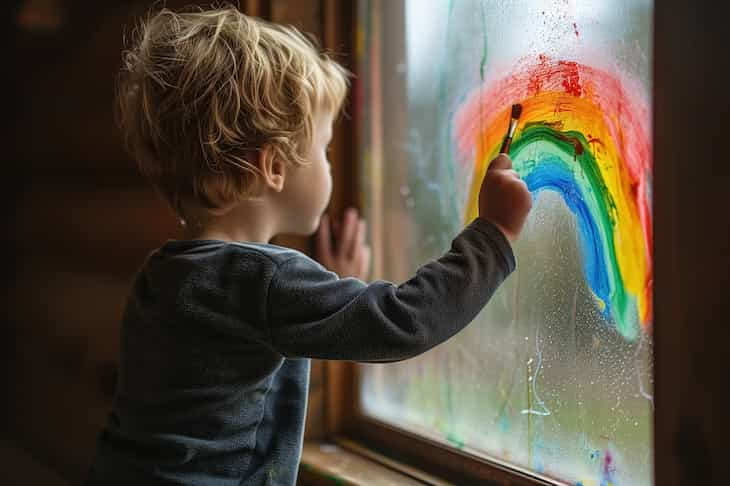As kids grow, they usually pay more attention to social things like faces or interactions.
However, kids with autism often find non-social things more interesting, like textures or shapes.
A new study discovers more about how their attention works.

It's different for autistic kids
From the time they are born, babies have important abilities that help them survive and adapt.
One of these abilities is an attention system that helps them notice the presence of others.
Right from the start, newborns are fascinated by faces and face-like shapes, especially moving ones.
This early liking for biological movement is essential for a baby's development, promoting exploration and interaction with the surroundings, laying the foundation for more advanced social interactions.
However, this shared social attention can be different in kids with autism spectrum disorders (ASD), which can affect their ability to communicate and interact socially.
How it was tested
In investigating this, scientists utilized eye-tracking devices to monitor the eye movements of 165 children with ASD and 51 typically developing children as they viewed a cartoon.
While typically developing children increased their focus on social interactions as they grew, this synchronization was absent in ASD children.
Instead, the ASD children displayed interest in various stimuli, like objects or peculiarities in the cartoon scenery, with each child developing their own distinct preferences over time.
Why it's important
The results highlight the significance of directing therapeutic interventions toward social attention in the early stages of children with ASD, particularly those facing substantial developmental delays.
Interventions implemented early on could potentially assist autistic children in establishing and sustaining interest in social interactions, thereby contributing to their overall development.
The research team intends to apply their eye-tracking methodology to assess the impact of behavioral interventions designed to enhance communication skills in young autistic children.
Previously, we talked about studying Alzheimer's disease.












